Within the Administrative Services space, you have 4 options:
- Manage Service
- Manage Workspace
- Manage Applications
- Monitor Activity
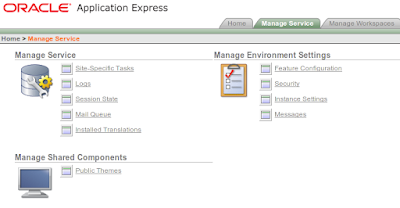
Within the Manage Service space, you have 3 categories:
- Manage Service
- Manage Environment Settings
- Manage Shared Components
This is where you manage your public themes. What are public themes?
Public themes allow you to add to the theme repository. They are available when you create an application or when you create a theme for an existing application.Manage Service
You create a public theme by selecting a theme from within a workspace and application. Once created, it cannot be edited directly. To edit, create an application based off the theme, edit the theme within that application and then you can create a new public theme with the updated application theme (and delete the old, if you no longer want it).
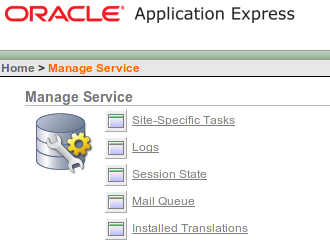
In the Manager Service section (of Manager Service, naturally), there are 5 sections:
- Site-Specific Tasks
- Logs
- Session State
- Mail Queue
- Installed Translations
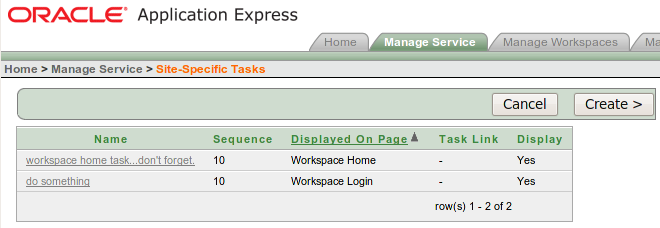
Where do those display?
Workspace Login

Workspace Home
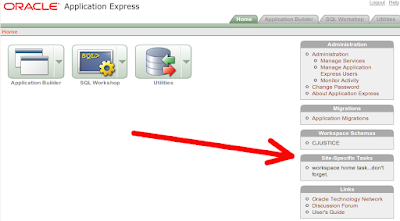
Site-Specific Tasks is helpful to relay messages to your development staff, perhaps a planned outage or a reminder to use constraints. ;)
Next up are Logs. From here you can manually purge SQL Workshop, Page View Acitivity, Developer Activity , External Click, Mail and Login Access logs. The reports on these logs can be viewed from the Workspace Home. Not really a whole lot to see here.
Session State
Not a whole lot to see here either. There is a report to view recent sessions with drill-down capabilities, but that's about it. The other 2 items in this section are "Purge Sessions, by age" and "Session State Statistics."
Mail Queue
Basically just a log of all the pending emails to be sent. You have the option to send them or delete individual emails.
Installed Translations
Finally, not much to see here either. Just a list of, you guessed it, installed translations.
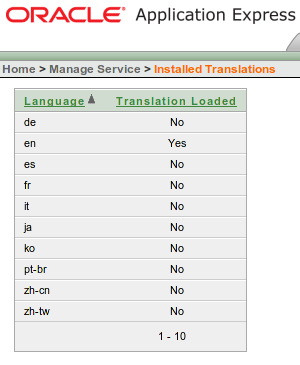
I'm going to take on the final piece of the Manage Service section in a separate post. This is where the guts of your APEX instance are managed. Lots of fun stuff here.

No comments:
Post a Comment